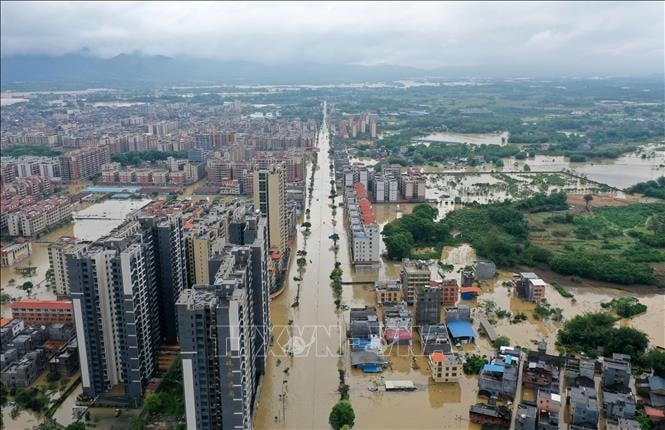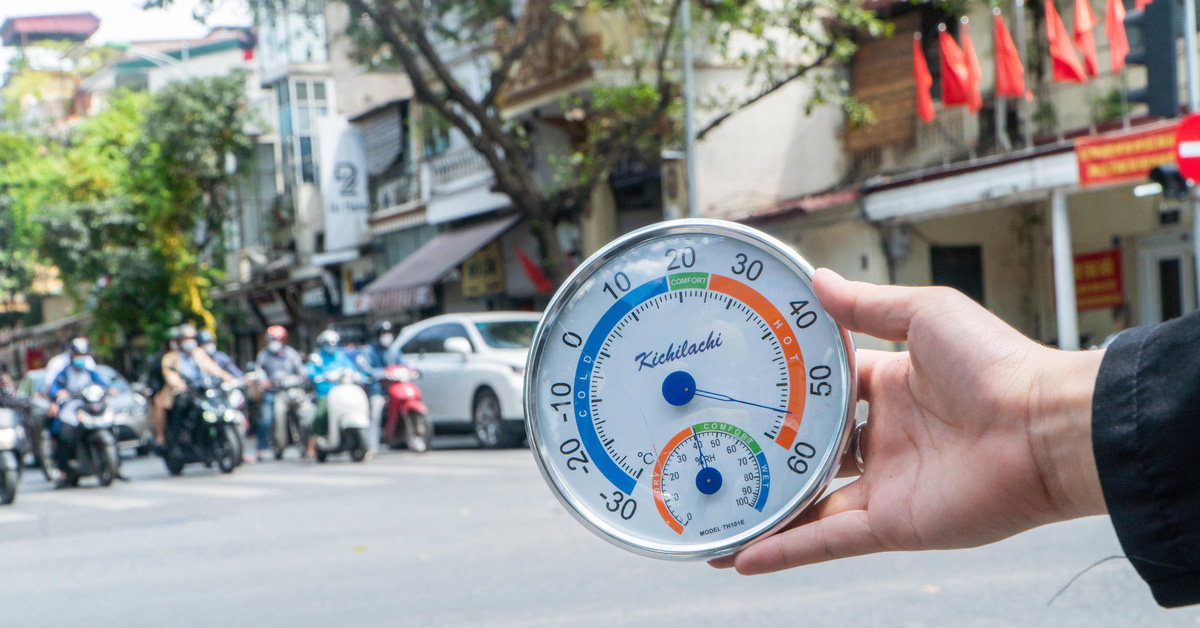Recent severe floods have claimed many lives and caused economic and agricultural damage in East Africa and parts of the Arabian Peninsula.

Flooding in Qingyuan, Guangdong Province, China on April 21, 2024.
Severe heatwaves are also gripping large swathes of Asia, disrupting daily life and posing a serious threat to public health. The extreme weather events experienced in the second half of April continue to highlight society’s vulnerability to weather, water and climate hazards, and underscore the importance of Early Warning Systems for all.
A weakening El Nino, along with the Indian Ocean Dipole, played a major role, particularly in the floods in East Africa, the drought in South Africa and the heatwave in Southeast Asia. However, according to experts from the World Meteorological Organization (WMO), the excess energy in the atmosphere and oceans due to greenhouse gas emissions from human activities also has a significant impact, particularly on extreme heat.
At the 80th session of the Economic and Social Commission for Asia and the Pacific on April 23, WMO Deputy Secretary-General Ko Barrett warned that climate change is exacerbating the frequency and intensity of these phenomena, severely impacting society, the economy and, most importantly, human life and habitat. Ms. Ko Barrett emphasized that the extreme weather events since the beginning of the year in Asia are continuing the trend outlined in the WMO's State of the Climate Report for Asia 2023.
The report finds that Asia will remain the world’s worst-hit region by weather, climate and water disasters in 2023. Storms and floods are responsible for the highest casualties and economic losses, while the impacts of heat are becoming more severe. Heat is increasingly becoming a “silent killer,” said Ko Barrett. Heat-related deaths are often underreported, so the true scale of premature deaths and economic losses from lost productivity, crop failures and strain on power grids are not accurately reflected in the figures.
Meanwhile, the latest Assessment Report of the Intergovernmental Panel on Climate Change (IPCC) concluded that in Asia, extreme heat waves have increased, while cold spells have decreased, and this trend will continue in the coming decades.
Last year, a study by World Weather Attribution found that "extreme heat and humidity in South Asia in April 2023 was largely caused by climate change, affecting vulnerable and disadvantaged communities".
India has been experiencing pre-monsoon heatwaves in recent weeks, with temperatures hovering around 40°C. The situation is likely to persist, according to the India Meteorological Department. The agency said that during the March-May 2024 period, a higher than normal number of heatwave days is likely to occur in most parts of the country, except for Northeast India, the Western Himalayas, the Southwest Peninsula and the Western Seaboard. The frequency, duration and maximum duration of heatwaves are increasing due to global warming. IPCC projection models suggest that by 2060, the trend will increase by two heatwaves and the duration of heatwaves will increase by 12-18 days.

Severe heat in Dhaka, Bangladesh on April 25, 2024.
Bangladesh, Myanmar and Thailand are also among the countries severely affected, with heatwaves disrupting economic and agricultural activities and forcing school closures. Thailand’s Ministry of Public Health has recorded 30 heat-related deaths so far this year, compared to a total of 37 heat-related deaths in all of 2023. In neighboring Myanmar, temperatures have soared to 45.9°C over the past week, with the heatwave expected to continue for the next few days.
April is typically a hotter month in parts of South and Southeast Asia, but El Niño and climate change are pushing temperatures to new highs, said WMO Regional Director for Asia and the South West Pacific Ben Churchill.
While South Asia is in the throes of heat, the United Arab Emirates (UAE), with its hot, dry desert climate and very low annual rainfall, has suddenly suffered floods. The National Center of Meteorology announced on April 16 that the UAE recorded its heaviest rainfall in 75 years. In less than 24 hours, the “Khatm al-Shakla” area in Al Ain, UAE recorded 254.8 mm of rain.
A slow-moving storm system also hit Oman hard on April 14-15, causing flash floods and killing 17 people.
According to the IPCC, in the Arabian Peninsula, as the weather warms, total annual rainfall, intensity and frequency of heavy rains will increase.
Likewise, heavy rains are wreaking havoc across East Africa. In recent weeks, Tanzania has recorded at least 155 deaths and more than 230 injuries due to flash floods.
Meanwhile, according to expert Alvaro Silva, the drought in southern Africa is due to the poor rainy season (from November to March), the typical influence of El Niño in this region and the situation is being aggravated by exceptionally high temperatures.
Source



































Comment (0)